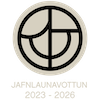Almenn verkefni 2023
Almenn verkefni 2023
Heiti verkefnis : | Activity Spaces II. Impact of Mobility Patterns on Wellbeing | |
Verkefnastjóri : | ||
Stutt lýsing á verkefninu: | ||
Rapidly growing urban populations are one of the biggest contributors to climate change. Thus it is crucial that urban areas support a good quality of life while reducing greenhouse gas emissions. It has been shown that dissatisfaction with the urban environment, along with e.g. densification, can lead to increased emissions from various compensatory behaviours (i.e. long-distance travel or increased consumption of goods). Studies have noted these patterns in the Nordic context, including in Iceland. It has also been noted that it is not just enough to provide a certain urban form, but a city should rather meet the needs of people holistically. A significant aspect of building a quality urban environment is the wellbeing of people living in it, neighborhood by neighborhood rather than only as a whole. After all, Iceland has been named as one of the happiest places on Earth. That is why we want to know how everyday mobility forms activity spaces and how they connect to people’s life satisfaction.
| ||
Tilgangur og markmið: | ||
The aim of the project is to investigate how life satisfaction is distributed across the urban space in the Reykjavik capital area and how it connects to neighbourhood qualities. The project would continue the work of the previously funded project “Activity spaces: a novel approach to describing urban mobility and designing low-carbon development” where activity spaces were mapped for the first time in Reykjavik and connected to GHG emissions from leisure travel. Now, the mapped activity spaces will be used to assess interaction with the urban environment and its impact on wellbeing. The project would pave the way for similar future projects, potentially using more accurate data sources that cover everyday mobility at regular intervals (i.e. mobile positioning data (Ahas et al., 2010)). The project goals are well aligned with Vegagerðin’s strategy (Vegagerðin, 2019). It will contribute to information and knowledge (Upplýsingar og þekking) about urban mobility patterns in Reykjavik and its association with wellbeing. Furthermore, thanks to the academic collaboration, the results of the project can be disseminated and used as educational material for university students. The project is aligned with the following UN SDGs: 11.6, 13.2, 13.3, 17.16, 17.17. The project also aligns with the Icelandic government’s climate goals in section “Land transport” (A1-A3) as it studies the connection between mobility and wellbeing in the Icelandic context (Umhverfis- og auðlindaráðuneytið, 2020). | ||

